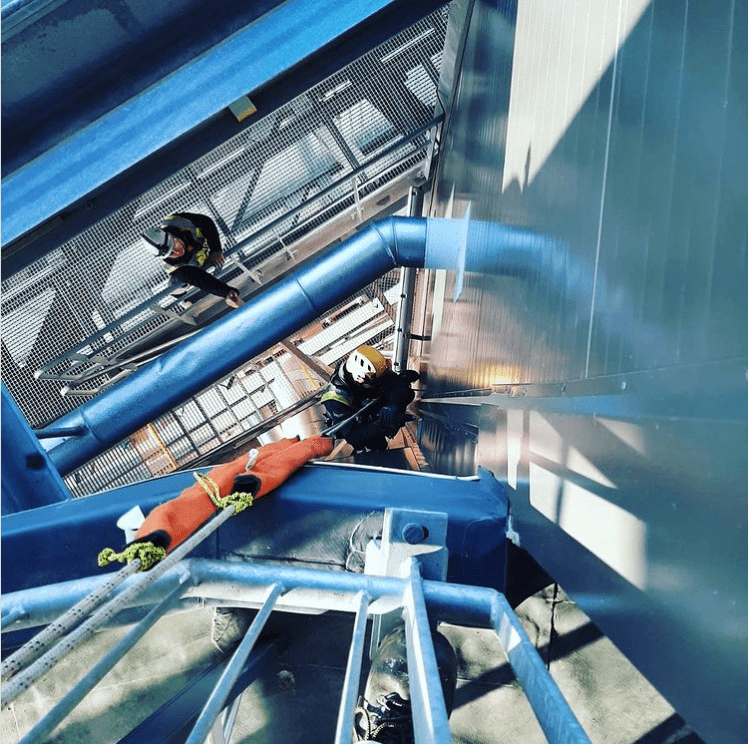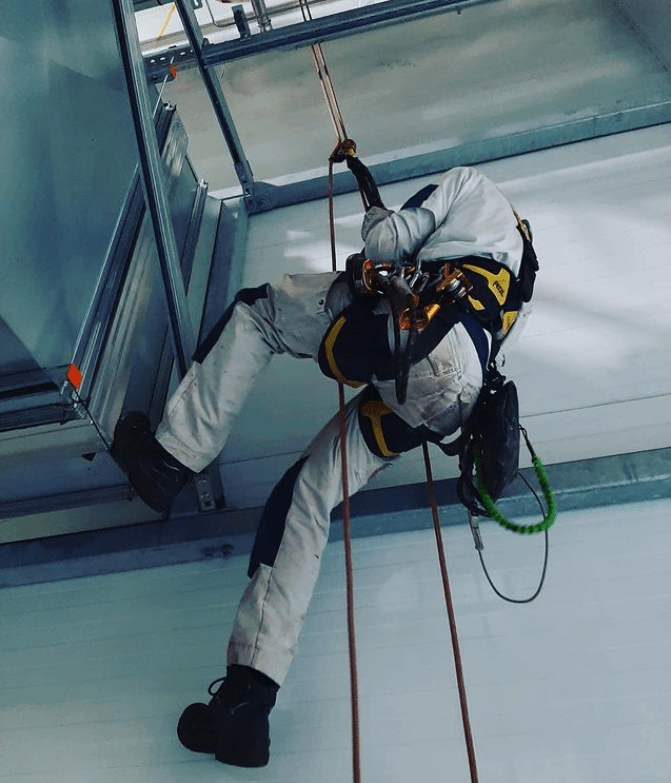In an era where sustainability is more than a buzzword, industries are constantly searching for ways to minimize their environmental footprint. Rope access, an innovative method for reaching and working at height, offers a green alternative to traditional access methods like scaffolding and heavy machinery.
Its minimal environmental impact makes it a preferred choice for companies striving to meet their sustainability goals.
Here, we explore the environmental and sustainability benefits of rope access, focusing on its reduced carbon footprint and minimal disturbance to surroundings.
Reduced carbon footprint
Traditional access methods, such as scaffolding or powered lifts, require extensive resources for setup and operation. Heavy machinery like cranes and cherry pickers not only consume significant amounts of fuel but also emit large quantities of greenhouse gases (GHGs) during operation.
These emissions contribute to air pollution and climate change, making their widespread use increasingly unsustainable.
Rope access, by contrast, relies primarily on human effort. The equipment used—ropes, harnesses, and other gear—requires no fuel to operate, dramatically reducing energy consumption. This method eliminates the need for transporting bulky equipment, further reducing emissions from logistics.
For example, assembling and transporting scaffolding can require multiple vehicles, whereas rope access technicians can carry their gear in a single vehicle, often with room to spare.
Additionally, many rope access teams operate with minimal equipment compared to traditional methods, which reduces the carbon footprint associated with manufacturing, maintenance, and disposal.
By leveraging human skill and lightweight equipment, rope access provides a sustainable solution that aligns with global efforts to reduce carbon emissions.
Minimal disturbance to surroundings
Beyond emissions, traditional access methods can disrupt the environment in significant ways. The setup of scaffolding, for instance, often involves large-scale construction that can damage the surrounding area, especially in sensitive environments such as forests, wetlands, or historical sites.
Heavy machinery, with its substantial weight and footprint, can harm fragile ecosystems, compact soil, and disturb wildlife.
Rope access, on the other hand, is known for its minimal impact on the surroundings. The technique allows technicians to work in hard-to-reach areas without requiring extensive groundwork or intrusive installations.
For instance, in wind turbine maintenance or offshore oil rig inspections, rope access technicians can descend directly to the work site, bypassing the need for cranes or platforms that might disrupt marine ecosystems or nearby habitats.
This low-impact approach is particularly advantageous in urban settings as well. When repairing high-rise buildings or maintaining bridges, rope access eliminates the need for road closures and large staging areas, reducing disruption to local communities and economies.

Applications that highlight sustainability
The environmental benefits of rope access become especially clear in rope access industries that prioritize sustainability. For instance:
- Renewable energy: Rope access plays a vital role in maintaining wind turbines. Instead of using cranes that require heavy fuel consumption and disrupt the area, technicians rely on ropes to access turbine blades, ensuring minimal environmental impact.
- Wildlife conservation projects: Rope access is often used in areas where ecosystems need to be preserved, such as cliff-side bird habitats or protected forests. The lightweight and non-intrusive nature of this method helps protect the environment while work is carried out.
- Building restoration: Historical landmarks and culturally significant structures often require sensitive restoration. Rope access avoids the damage that scaffolding or machinery might cause to these delicate sites.
Choose for a sustainable future with rope access
As global industries face mounting pressure to adopt greener practices, rope access stands out as a solution that balances efficiency with environmental stewardship.
By significantly reducing carbon emissions and minimizing disruption to natural and urban environments, it sets a standard for sustainable work practices.
Businesses adopting rope access not only demonstrate their commitment to sustainability but also benefit from reduced costs associated with fuel, transportation, and site preparation.
Furthermore, choosing environmentally friendly methods can enhance a company’s reputation, appealing to increasingly eco-conscious consumers and stakeholders.
In conclusion, rope access irata level 1, irata level 2 or irata level 3 isn’t just a practical solution for working at height—it’s a step forward in reducing the environmental impact of industrial activities. Its reduced carbon footprint and minimal disturbance to surroundings make it a vital tool for companies aiming to operate sustainably in a rapidly changing world.
Want to know more about this subject?
Contact us today if you´re looking for a rope access solution.
T: +31 (0)20 6867 808

Alexander van der Zee, owner Cocoon Holland B.V.



